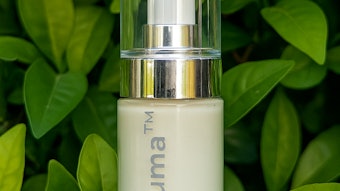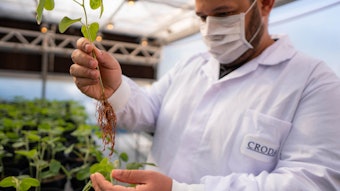New ingredients and technologies have led to a flurry of new product claims for skin care products, particularly in antiaging. Twenty years ago, a brand could get away with far less specific claims, such as Estée Lauder’s “visible difference” promise, but today’s consumers have learned to expect a lot more. If they are paying a premium for a product, they expect to see results. “Now we want cosmetics to reduce cellulite, diminish the seven signs of aging, regenerate collagen and elastin, and so on,” said Jack Ferguson, managing director, Skinnovation.
According to Frost & Sullivan research analyst Yana Charushkina, product claims are changing: “We are seeing more biotechnologically derived antiaging ingredients. There is a change toward improving compounds’ compatibility with other ingredients and advancing quality, as well as improving stability and solubility. In addition, the production technologies are moving toward the green trend.”
Improved solubility can be achieved by blending compounds and developing different complexes with solubilizers and stabilizers. Enhancing stability is possible by developing derivative forms of vitamins that show higher stability than the pure compounds, so the market offers a variety of derivatives. Companies are looking to find ways to prevent their contamination and increase efficiency.
Charushkina points out that current legislation in Europe does not affect the introduction of new claims, but only regulates the market in terms of safety and environmental stability. “Many of the safety and environmental issues have been resolved recently—including exfoliating and safe antimicrobial ingredient concentrations in skin care products,” she says. “The regulatory environment is a challenging and restricting factor for skin care active ingredients manufacturers, but the main participants do not expect more regulations to come.”
Getting Tough on Claims
The claims brands make vary from country to country. For example, it is easier to make stronger claims in the U.S. than the U.K., which has the toughest regulations of any country. In the U.K., advertising is regulated through the independent body Advertising Standards Authority (ASA), which, in the past two years, has become much more active in scrutinizing cosmetics. The type of claim a brand can make in the U.K. is “softer” than elsewhere. For example, a skin care brand can claim to reduce wrinkles in U.S. advertising, but in the U.K., it must talk about reducing “the appearance of” wrinkles.
“Claims are the same, in principle,” said Chris Gummer, director of U.K. consultancy Cider Solutions Ltd. “It doesn’t stop a brand making global claims. The ‘rule’ is that if you can say it in the U.K., you can say it anywhere.”
However, brands must also be aware of what they imply. For example, L’Oréal Paris was reprimanded by the ASA for its Telescopic Mascara advertisement, which implied that spokesmodel Penelope Cruz had created her implausibly long lashes by using the product. L’Oréal admitted she was wearing false eyelashes in the TV and print ads, and the company was forced to include a disclaimer in future campaigns. These days, skin care brands go to great lengths to superimpose text onto U.K. ads to ensure they meet the ASA’s stringent criteria.
Gummer points out that although it may seem easier to make claims on the U.S. market, brands still need to have data to support what they say, and marketers remain responsible for juggling claims and where they are made. “Until other countries have similar controls as the U.K., then there will be different claims for products,” affirms Skinnovation’s Ferguson.
Evolving Claims and Endorsements
Cider Solutions’ Gummer does not think that claims have changed much over the past 20 years, despite companies having large R&D operations and data that can be a challenge for regulators and watchdogs alike. The problem is that many skin care studies do not go far enough to prove product efficacy, often because the number of people used in tests is quite small. “They can do it if they really want to,” says Gummer, “but no one is prepared to step out of line.” Perhaps the reason is that if companies make stronger claims, they may step over the line into the area of pharmaceutical oversight. If that were the case, they would not be allowed to market their products as cosmetics.
In the U.S., marketers may get around this problem by using doctors or dermatologists to endorse skin care products. “In the U.S., a doctor can go on TV with a quasi-medical endorsement,” says Gummer. “If I wanted to do the same in the U.K., I would not be allowed to say I’m a doctor.” However, this has not deterred consumers from buying into the burgeoning doctor/derm trend, picking up product information mainly through editorial and PR.
However, Gummer does not believe that these differences in approach influence consumers’ purchasing decisions. “Consumers hear the words they want to,” he says. “They don’t want to hear that a product only helps, they want it to work.”
Imogen Matthews is a consultant to In-cosmetics. For more information, contact www.imogenmatthews.co.uk.










